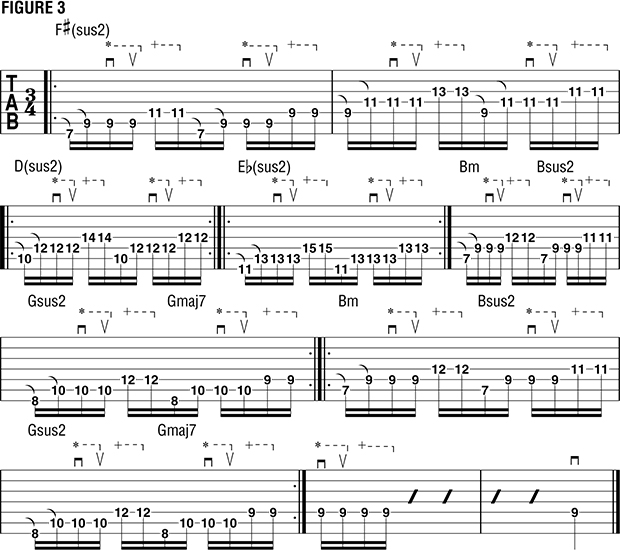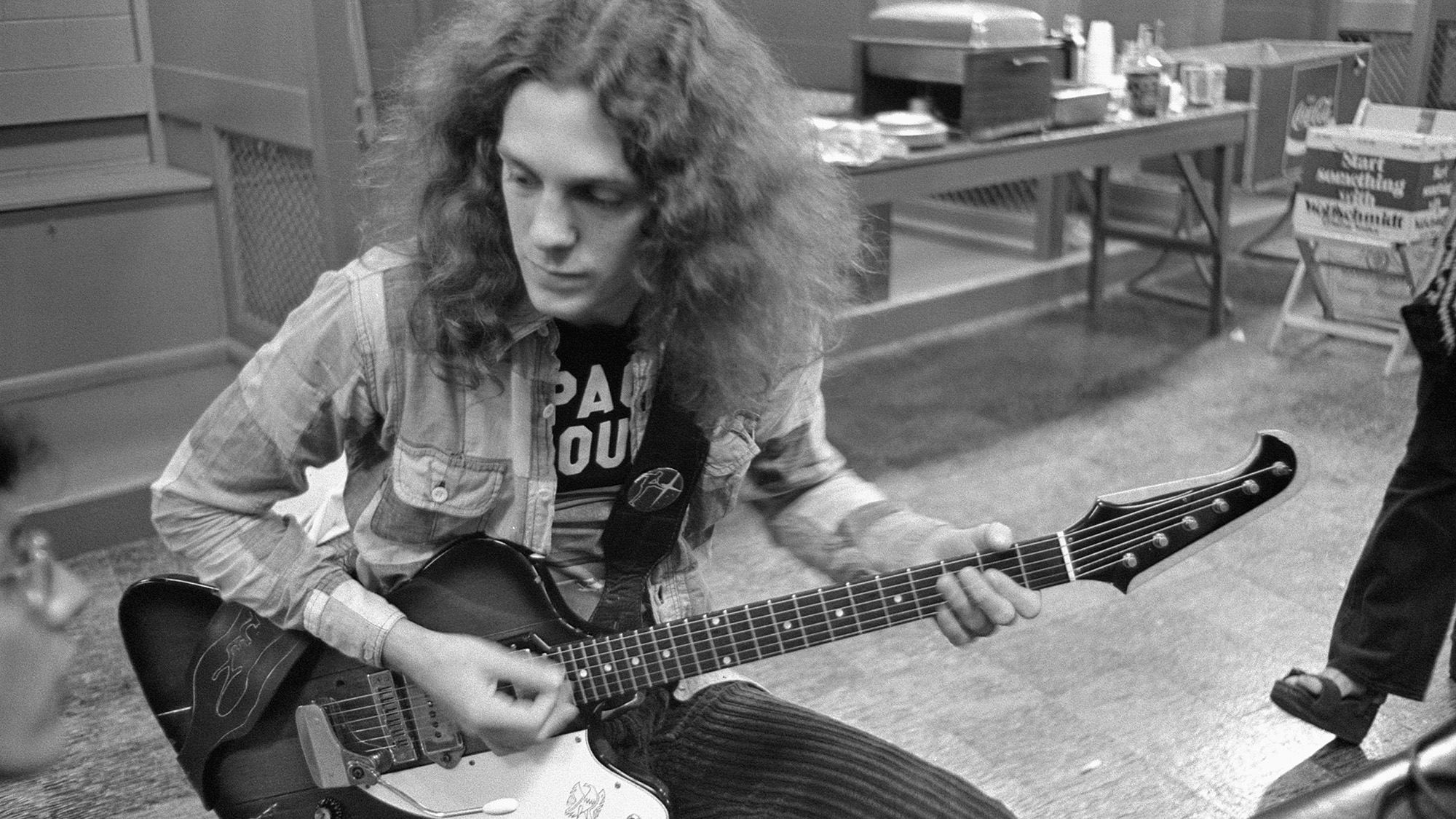Prog-Gnosis: How to Play the Thumb-Slapped Intro to "An Infinite Regression"

This month, I’d like to demonstrate how I play the intro to “An Infinite Regression,” the opening track from the latest Animals as Leaders album, Weightless. This part features a very unusual and unique “double-thumbing” technique that, I believe, was pioneered by the great jazz bassist Victor Wooten. As usual, all of the licks in this column are arranged for seven-string guitar (low to high, B E A D G B E), though I play the part on an eight-string.
For this intro, I use my pick-hand thumb to sound consecutive notes with a downstroke followed by an upstroke, after which I use the index and middle fingers for fingerpicking. Along with the fret-hand tapping that initiates each phrase, the combination of these different techniques lets you devise cool, rhythmically complex and deceptive-sounding riffs like this one.
Let me first illustrate the basic technique I use to play the intro lick in “An Infinite Regression.” As shown in FIGURE 1, I begin with an Fs root-fifth shape, which I hammer on with my fret hand’s index and ring fingers on the seventh and ninth frets of the low B and E strings, respectively. This is followed by the previously mentioned downstroke and upstroke with the pick-hand thumb, sounding the third and fourth notes in the phrase, followed by the pick-hand index and middle fingers sounding the fifth and sixth notes. In bar 2 of FIGURE 1, I use the exact same technique but switch to the notes E and D, played on the seventh fret of the A string and the 10th fret of the low E string, respectively.

Many of you do not own seven-string guitars, so I’d like to show you how to play this lick on a six-string, as illustrated in FIGURE 2. On a six-string, begin with a hammer-on to the low E string’s second fret, followed by a hammer-on to the fourth fret of the A string. In bar 2, I move over to the second fret of the D string and the fifth fret of the A string. The lighter gauge and thinner tone of these higher strings hinders the power of the lick when played on a six-string guitar, so I suggest picking up a seven-string (or, even better, an eight-string!) to play this tune, as it will sound heavier and more authentic.

Now let’s get to the riff that comes in at 0:17, as shown in FIGURE 3. Instead of playing the riffs as sextuplets (six-note figures) as I had done in FIGURES 1 and 2, I play it as straight 16th notes, which results in a “two against three” rhythmic feel, with two different melodic shapes consisting of six evenly spaced 16th notes falling across three beats.
All the latest guitar news, interviews, lessons, reviews, deals and more, direct to your inbox!
